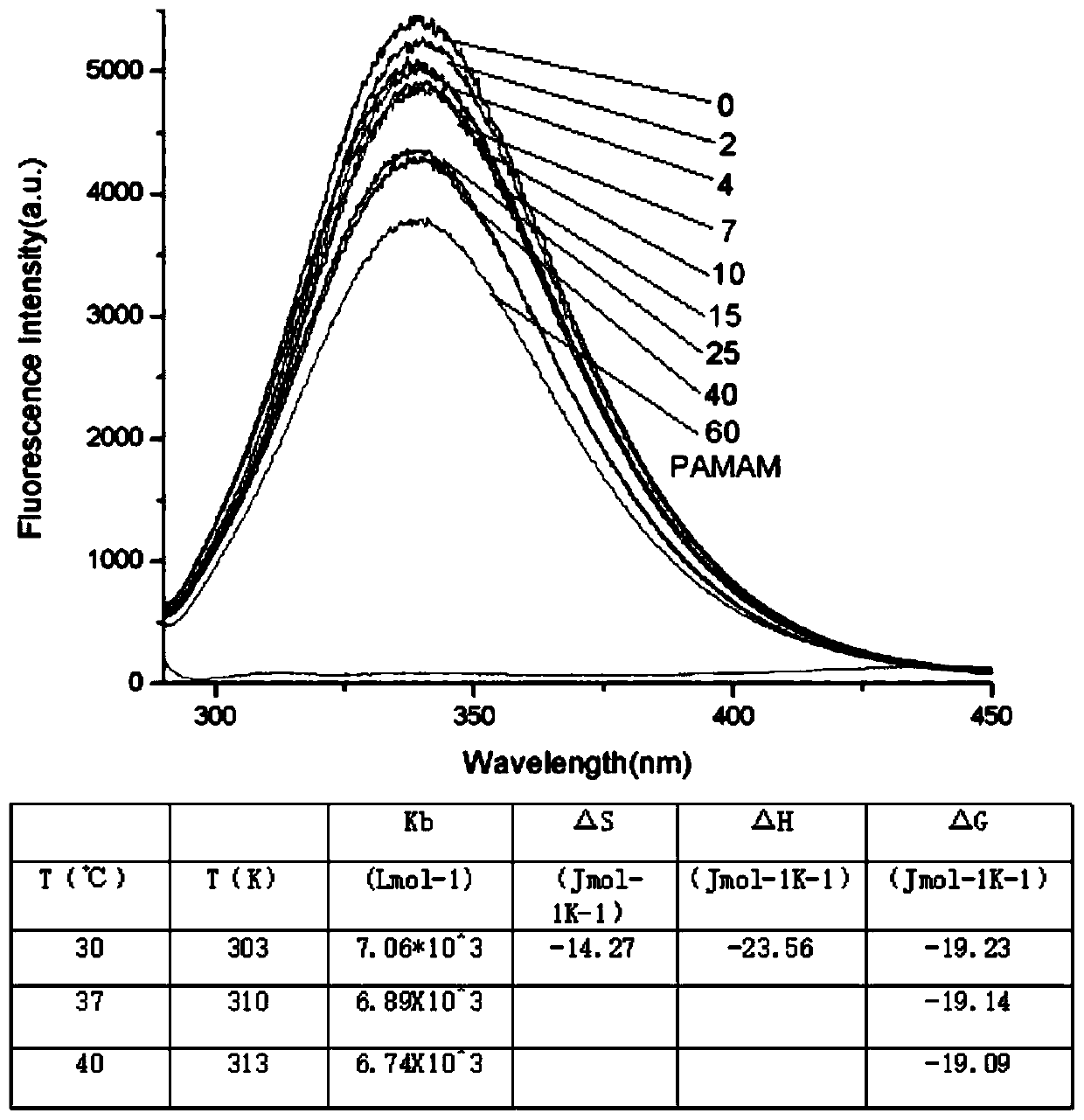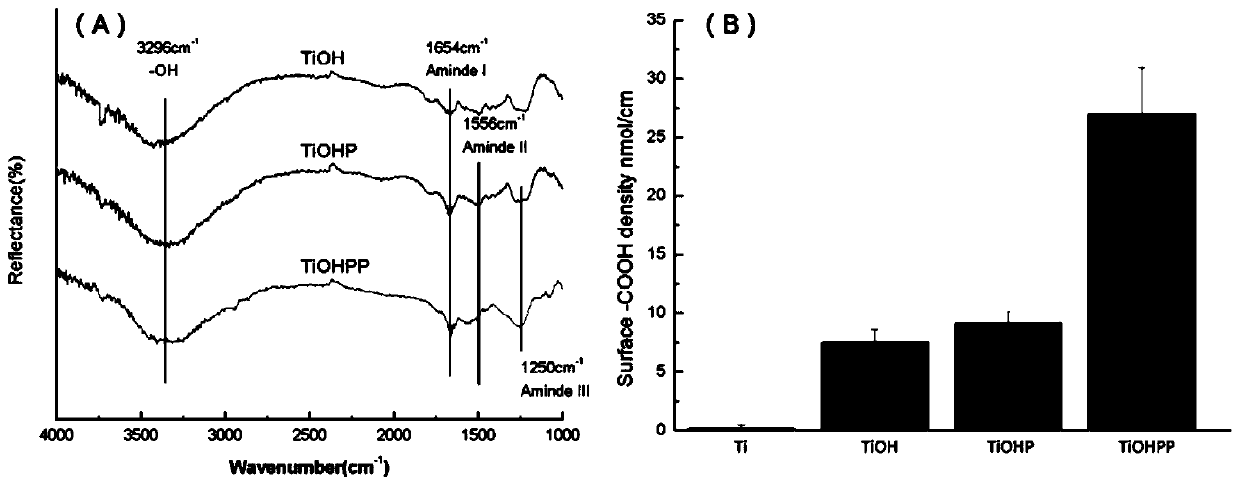Method for forming albumen layer by mediating albumin on surface of material, biological material and application thereof
An albumin-mediated technology, applied in the field of biomaterials, can solve the problems that the biocompatibility of titanium and titanium alloys does not meet the clinical requirements
- Summary
- Abstract
- Description
- Claims
- Application Information
AI Technical Summary
Problems solved by technology
Method used
Image
Examples
Embodiment 1
[0050] This embodiment provides a method for mediating albumin to form a protein layer on the surface of a material, which includes the following steps:
[0051] (1) Alkali activation. After cleaning the surface of pure titanium, it is immersed in 2.5mol / L NaOH solution and reacted for 8 hours. Then, after ultrasonic cleaning with RO water, immerse in UP water, let stand at 80°C for 8 hours, ultrasonically clean with UP water, and then dry for use.
[0052] (2) Surface amination. Submerge the alkali-activated sample in a poly-L-lysine solution with a concentration of 2 mg / mL (poly-L-lysine with an average molecular weight of about 150 KDa is dissolved in a phosphate buffer with pH=7), and the reaction 8h, and then washed 3 times with phosphate buffered saline and stored for later use.
[0053] (3) Covalent immobilization of PAMAM. Use PAMAM with a molecular weight of about 1000 (carboxyl at the end) to configure a 0.5 mg / mL dendrimer solution, add carboxyl activator dichlo...
Embodiment 2
[0056] This embodiment provides a method for mediating albumin to form a protein layer on the surface of a material, which includes the following steps:
[0057] (1) Alkali activation. After cleaning the surface of pure titanium, it was immersed in a 3.5mol / L NaOH solution and reacted for 12 hours. Then, after ultrasonic cleaning with RO water, immerse in UP water, let stand at 90°C for 12 hours, ultrasonically clean with UP water, and dry for later use.
[0058] (2) Surface amination. Submerge the alkali-activated sample in a poly-L-lysine solution with a concentration of 3 mg / mL (poly-L-lysine with an average molecular weight of about 300 KDa is dissolved in a phosphate buffer solution of pH=8), and the reaction 12h, and then washed 3 times with phosphate buffered saline, and then stored for future use.
[0059] (3) Covalent immobilization of PAMAM. Use PAMAM with a molecular weight of about 100,000 (carboxyl at the end) to configure a 10 mg / mL dendrimer solution, add ca...
Embodiment 3
[0062] This embodiment provides a method for mediating albumin to form a protein layer on the surface of a material, which includes the following steps:
[0063] (1) Alkali activation. After cleaning the surface of pure titanium, it is immersed in 3mol / L NaOH solution and reacted for 10 hours. Then, after ultrasonic cleaning with RO water, immerse in UP water, let stand at 85° C. for 10 hours, ultrasonically clean with UP water, and then dry for use.
[0064] (2) Surface amination. Submerge the alkali-activated sample in a poly-L-lysine solution with a concentration of 2.5 mg / mL (poly-L-lysine with an average molecular weight of about 200 KDa is dissolved in a phosphate buffer with pH=7.4), React for 10 h, then wash with phosphate buffered saline for 3 times and store for future use.
[0065] (3) Covalent immobilization of PAMAM. Use PAMAM with a molecular weight of about 9000 (carboxyl at the end) to configure a 1 mg / mL dendrimer solution, add carboxyl activator N-hydroxy...
PUM
| Property | Measurement | Unit |
|---|---|---|
| concentration | aaaaa | aaaaa |
| molecular weight | aaaaa | aaaaa |
| concentration | aaaaa | aaaaa |
Abstract
Description
Claims
Application Information
 Login to View More
Login to View More - R&D
- Intellectual Property
- Life Sciences
- Materials
- Tech Scout
- Unparalleled Data Quality
- Higher Quality Content
- 60% Fewer Hallucinations
Browse by: Latest US Patents, China's latest patents, Technical Efficacy Thesaurus, Application Domain, Technology Topic, Popular Technical Reports.
© 2025 PatSnap. All rights reserved.Legal|Privacy policy|Modern Slavery Act Transparency Statement|Sitemap|About US| Contact US: help@patsnap.com



